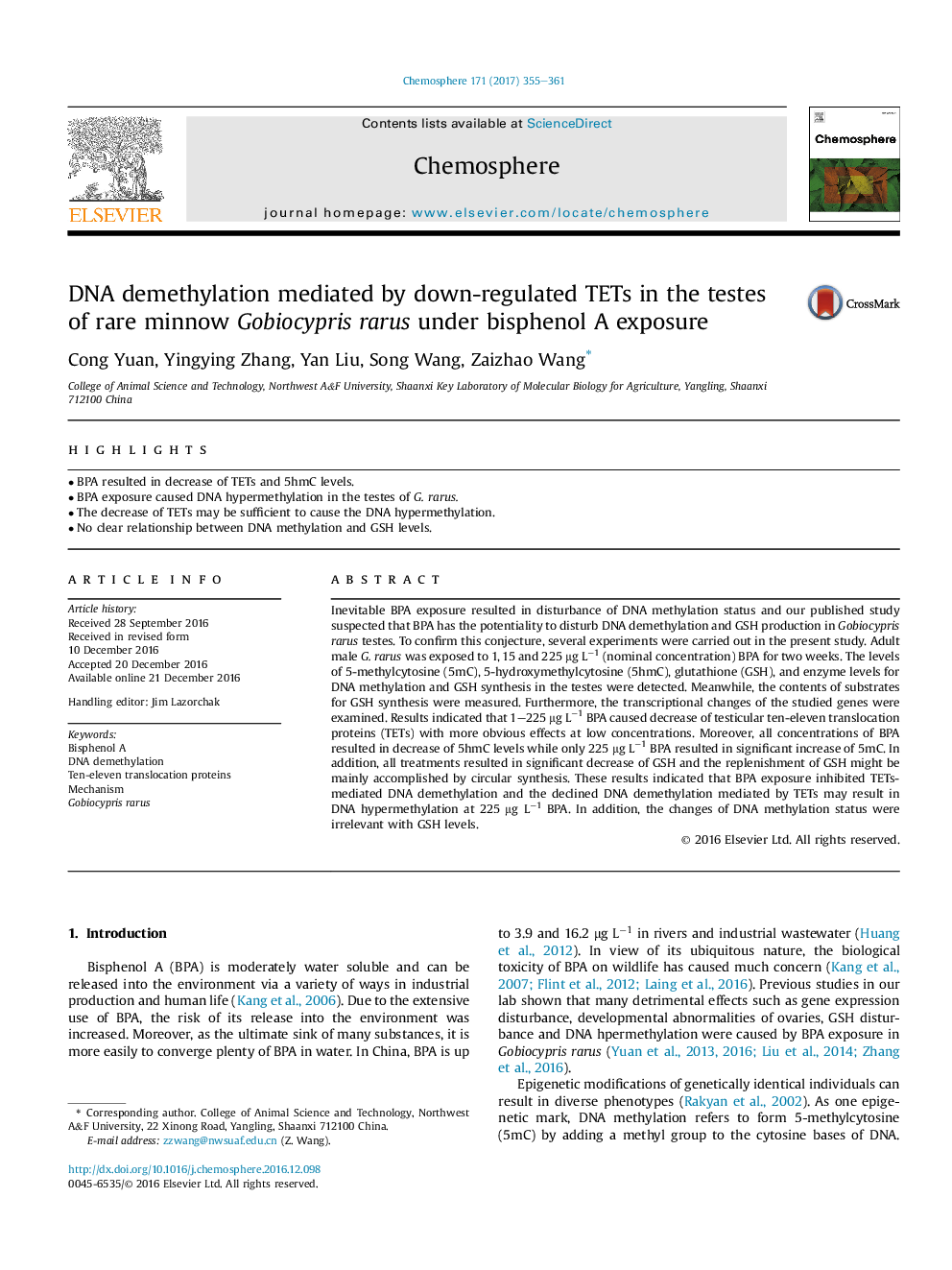| Article ID | Journal | Published Year | Pages | File Type |
|---|---|---|---|---|
| 5746366 | Chemosphere | 2017 | 7 Pages |
â¢BPA resulted in decrease of TETs and 5hmC levels.â¢BPA exposure caused DNA hypermethylation in the testes of G. rarus.â¢The decrease of TETs may be sufficient to cause the DNA hypermethylation.â¢No clear relationship between DNA methylation and GSH levels.
Inevitable BPA exposure resulted in disturbance of DNA methylation status and our published study suspected that BPA has the potentiality to disturb DNA demethylation and GSH production in Gobiocypris rarus testes. To confirm this conjecture, several experiments were carried out in the present study. Adult male G. rarus was exposed to 1, 15 and 225 μg Lâ1 (nominal concentration) BPA for two weeks. The levels of 5-methylcytosine (5mC), 5-hydroxymethylcytosine (5hmC), glutathione (GSH), and enzyme levels for DNA methylation and GSH synthesis in the testes were detected. Meanwhile, the contents of substrates for GSH synthesis were measured. Furthermore, the transcriptional changes of the studied genes were examined. Results indicated that 1-225 μg Lâ1 BPA caused decrease of testicular ten-eleven translocation proteins (TETs) with more obvious effects at low concentrations. Moreover, all concentrations of BPA resulted in decrease of 5hmC levels while only 225 μg Lâ1 BPA resulted in significant increase of 5mC. In addition, all treatments resulted in significant decrease of GSH and the replenishment of GSH might be mainly accomplished by circular synthesis. These results indicated that BPA exposure inhibited TETs-mediated DNA demethylation and the declined DNA demethylation mediated by TETs may result in DNA hypermethylation at 225 μg Lâ1 BPA. In addition, the changes of DNA methylation status were irrelevant with GSH levels.
